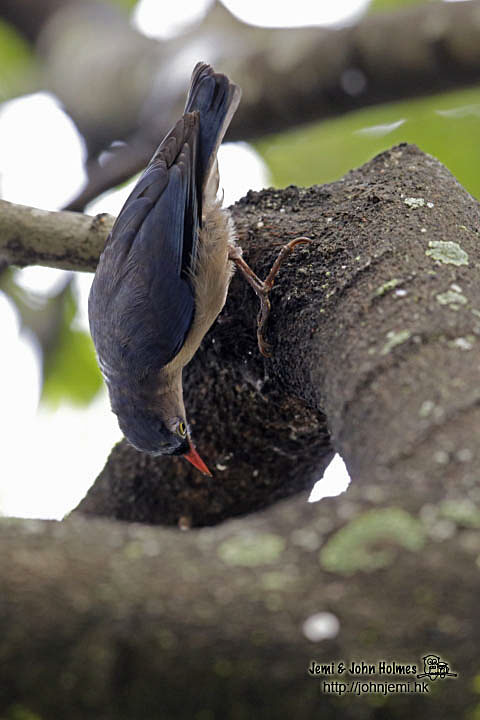Black Baza is a species that expanded it's breeding range from far southwest China (and Vietnam, Laos, Thailand) to Hong Kong and other parts of south-east China through the 1970s and 1980s.
But from a high point during the 1990s, numbers have fallen back again.
Unlike some more recent additions to the Hong Kong "list", it's hardly the sort of bird that would be overlooked or misidentified, so it seems that there is no doubting the changes in status of this species.
Black Baza has never taken up full-time Hong Kong residence. They usually arrive in late April, and depart through the month of October. (There's one February record, but that's just birds for you !)
The first confirmed breeding record involved a nest with two young near Sha Tau Kok Police Station in mid-July 1989, found by Nigel Croft. I remember banging off about four rolls of slide film from the roof of the station with my old manual-focus Pentax ME, but all the results looked pretty same-ish.
All the shots in
this blog post were taken a few days ago, with a Canon 1D MkIV, 800mm lens and sometimes a 1.4 converter. The birds were quite distant, but at least they seemed unconcerned at my presence and behaved naturally.
 |
| Juvenile (left), adult (right) |
In the 1990s -and I'm quoting from The Avifauna of Hong Kong - "the total number of birds reported annually was in the range of 39(1993) to 131(1996), with an average of 78."
But in the past few years Bazas have become rarer again with, for example, just single-figure totals for 2011 and 2012, according to the two most recent (annual) Hong Kong Bird Reports.
So it was nice to find this species within walking distance of the flat where we live a few days ago.
A family party of five; - two adults and three young. The juveniles sunned themselves on a bare tree during the first couple of hours of daylight, while their parents foraged for insects - mostly praying mantises - in the canopies of nearby trees.
Sometimes the adults would land beside the young….
...and sometimes they would land a few metres away and call the young across for their food.
The juveniles lumbered on the bare branches, exploiting good opportunities for a wing-stretch or practice flap…
Or even some old-fashioned sun-bathing...
I don't know if this group actually nested where I saw them, but the young were quite clumsy and they obviously hadn't come very far. Nonetheless, they seem to have moved on now.
 |
| Time to go ! |
So, proof that we can have some birding fun in tropical south China in mid-summer. The lesson is to keep getting out there and to keep looking, I suppose.
Note to self: "Must try harder !"




























































